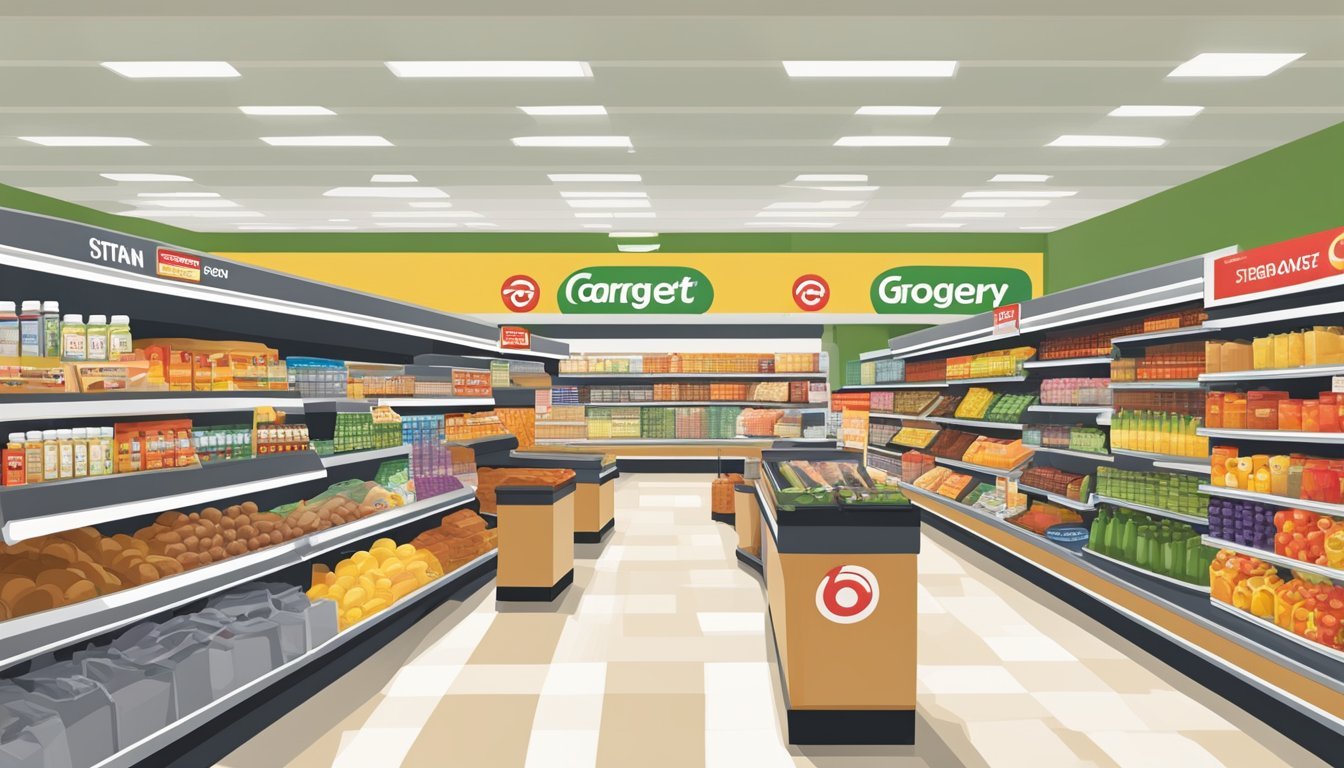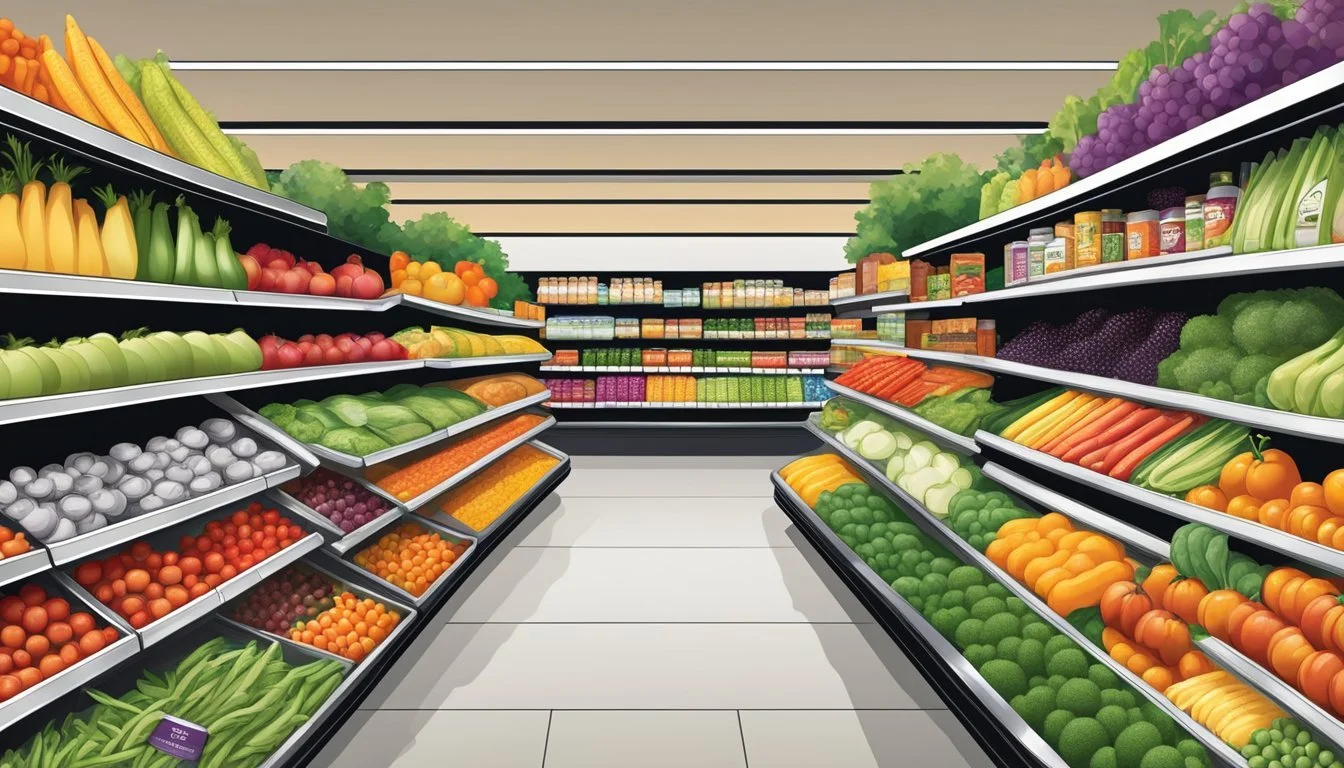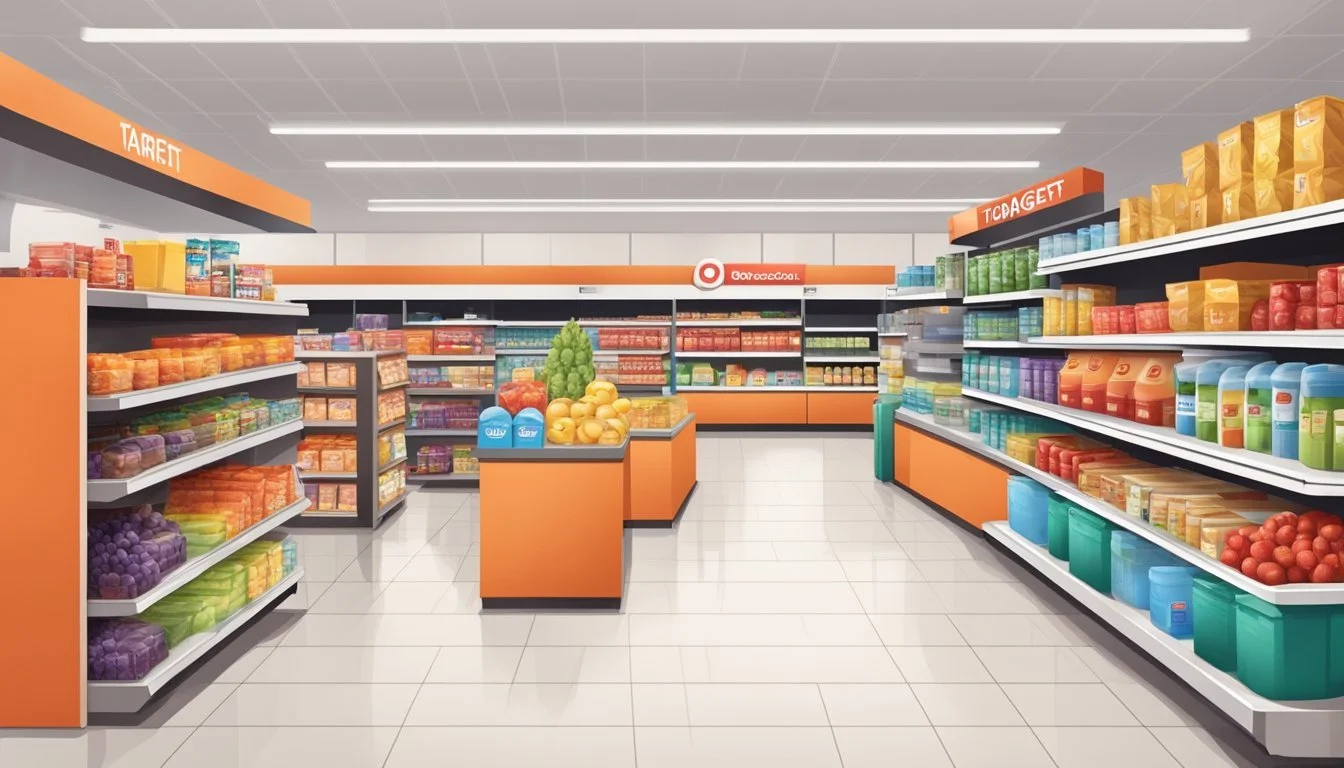Target vs Grocery Outlet
A Comprehensive Comparison
Target and Grocery Outlet offer distinct shopping experiences for customers seeking value in their grocery purchases. While Target is known for its trendy merchandise and clean store layouts, Grocery Outlet positions itself as an "extreme value" retailer with deeply discounted products.
Grocery Outlet typically offers lower prices than Target, with potential savings of up to 30% compared to average grocery store prices. This discount chain specializes in surplus and overstock items, creating a treasure hunt atmosphere for shoppers. Target, on the other hand, provides a more predictable selection of groceries alongside its other departments.
Both stores cater to different customer preferences. Target appeals to those who enjoy a curated shopping experience with consistent product availability. Grocery Outlet attracts bargain hunters willing to explore ever-changing inventory for significant savings. The choice between these retailers often depends on individual priorities - predictability and ambiance versus maximum cost savings.
Company Profiles
Target and Grocery Outlet are two distinct retail chains with unique business models and offerings. Each company caters to different consumer needs and preferences in the grocery and retail space.
Target Overview
Target is a major American retail corporation founded in 1902. Headquartered in Minneapolis, Minnesota, Target operates over 1,800 stores across the United States. The company is known for its broad range of products, including groceries, clothing, electronics, and home goods.
Target's grocery department offers a mix of national brands and private label products. The company's "Good & Gather" brand focuses on high-quality, affordable food items. Many Target locations feature expanded fresh food sections, including produce, meat, and bakery departments.
Target stores typically have a modern, clean aesthetic. The retailer emphasizes a pleasant shopping experience with wide aisles and organized displays. Self-checkout options and same-day delivery services cater to customer convenience.
Grocery Outlet Overview
Grocery Outlet Holding Corp is a unique grocery retailer founded in 1946. The company operates over 400 stores across the United States, primarily in California, Oregon, Washington, Pennsylvania, Idaho, and Nevada.
Grocery Outlet's business model revolves around offering name-brand products at discounted prices, often 40% to 70% below conventional retail prices. This is achieved through opportunistic buying strategies and partnerships with various suppliers.
Stores are run by independent operators, fostering a local, community-oriented atmosphere. The product selection at Grocery Outlet can vary significantly between visits, creating a "treasure hunt" shopping experience for customers.
Grocery Outlet focuses on offering bargains across various categories, including fresh produce, meat, deli, dairy, and packaged goods. The chain also carries non-food items like housewares and seasonal products at discounted prices.
Price Comparison
Target and Grocery Outlet offer different pricing strategies and savings opportunities for shoppers. Both stores aim to provide value, but their approaches vary in terms of everyday prices, discounts, and promotions.
Deals and Discounts
Target emphasizes its weekly promotions and Target Circle loyalty program. Shoppers can find discounts of 5-20% on select items each week. The store's app features digital coupons and personalized offers based on shopping history. Target often runs buy-one-get-one deals on household essentials.
Grocery Outlet takes a different approach with its "treasure hunt" model. The store offers deep discounts of up to 70% off brand-name products. These deals change frequently as Grocery Outlet buys excess inventory and closeouts. Shoppers may find high-end items at significant markdowns, but selection varies by visit.
Average Prices Across Various Items
Target tends to have mid-range prices on most grocery items. Its store brand, Good & Gather, offers lower-priced alternatives to national brands. Produce and meat prices at Target are generally competitive with traditional supermarkets.
Grocery Outlet's average prices can be 10-40% lower than conventional stores. However, selection is less consistent. Staples like milk, eggs, and bread are often priced competitively. Specialty and organic items may be available at steep discounts when in stock.
Sale Prices and Seasonal Offers
Target runs consistent sales cycles, with many items rotating on and off promotion every 6-8 weeks. Holiday seasons bring additional discounts, especially on decor and seasonal food items. The store often features loss leaders like $1 holiday candy to drive traffic.
Grocery Outlet's sales are less predictable due to its sourcing model. However, the store does offer seasonal specials, particularly on holiday-themed items and summer barbecue essentials. Shoppers may find deeply discounted holiday treats and decorations after major events.
Product Selection and Availability
Target and Grocery Outlet offer distinct product selections that cater to different shopping needs. Target provides a wider range of name-brand items, while Grocery Outlet specializes in discounted surplus products. Availability can vary at both stores, influencing the overall shopping experience.
Fresh Produce
Target stocks a consistent selection of fruits and vegetables, focusing on popular items like apples, bananas, and bagged salads. The produce section is well-organized and regularly replenished.
Grocery Outlet's produce offerings fluctuate based on available surplus. This can lead to unexpected variety and great deals on seasonal items. However, the selection may be less predictable from week to week.
Both stores carry organic options, though Target typically has a more extensive organic produce section.
Meat and Dairy
Target offers a standard array of meat and dairy products, including chicken, beef, pork, milk, eggs, and cheese. The selection includes both store-brand and name-brand options.
Grocery Outlet's meat and dairy inventory varies, often featuring discounted name-brand products. Shoppers might find premium cuts or specialty cheeses at lower prices, but availability is not guaranteed.
Both stores maintain refrigerated sections for fresh meats and dairy, ensuring product quality.
Frozen Foods and Pantry Goods
Target's frozen food aisles contain a wide range of options, from vegetables and pizzas to complete meals. The store also stocks an extensive selection of pantry staples, including canned goods, pasta, and snacks.
Grocery Outlet excels in this category, offering an eclectic mix of frozen foods and pantry items at discounted prices. Shoppers can find unique or discontinued products alongside everyday staples.
Both stores carry their own generic brands, with Target's Good & Gather line competing against national brands in quality and price.
Organic and Specialty Products
Target has expanded its organic and natural food offerings in recent years. The store features dedicated sections for these products, including gluten-free, vegan, and non-GMO options.
Grocery Outlet's organic and specialty selection is more limited but can include surprising finds at steep discounts. The availability of these products is less consistent than at Target.
Both stores cater to health-conscious consumers, but Target provides a more reliable selection of organic and specialty items.
Shopping Experience
Target and Grocery Outlet offer distinct shopping experiences tailored to different customer needs. Their approaches to store layout, product organization, and checkout processes vary significantly.
Store Layout and Design
Target stores feature a sleek, modern design with wide aisles and clear signage. The retailer's signature red accents create a vibrant atmosphere. Bright lighting enhances visibility throughout the store.
Grocery Outlet opts for a no-frills approach. Stores have a warehouse-like feel with utilitarian fixtures. The layout prioritizes functionality over aesthetics. Aisles may be narrower compared to Target, reflecting the discount store model.
Target typically provides shopping carts and baskets near the entrance. Grocery Outlet often offers carts but may have fewer basket options available.
Aisles and Shelves Organization
Target's aisles are neatly organized by department. Products are arranged logically, making it easy to find specific items. Shelves are well-stocked and maintained regularly.
Grocery Outlet's organization can be more eclectic. The store's inventory changes frequently based on available deals. This can lead to a "treasure hunt" experience for shoppers. Products may not always be in consistent locations from visit to visit.
Target uses clear price tags and promotional signage. Grocery Outlet often displays discounted prices prominently, highlighting potential savings.
Checkout Efficiency
Target offers multiple checkout options. These include traditional cashier lanes, self-checkout kiosks, and mobile checkout for small purchases. The retailer invests in technology to streamline the process.
Grocery Outlet typically relies on cashier-operated lanes. Self-checkout options are less common. Lines can form during peak hours due to fewer available registers.
Target's app allows for contactless payment and digital coupons. Grocery Outlet may have more limited digital integration at checkout.
Customer Service and Brand Perception
Target and Grocery Outlet offer distinct customer service experiences and have cultivated unique brand perceptions among shoppers. These factors significantly influence customer loyalty and satisfaction.
Customer Service Quality
Target emphasizes efficient checkouts and a welcoming atmosphere. The retailer trains staff to assist customers throughout the store, offering product recommendations and locating items. Target's customer service often extends to its digital platforms, providing support for online orders and in-store pickup.
Grocery Outlet focuses on a no-frills approach. Their stores typically have fewer staff members, reflecting the discount model. Employees are knowledgeable about product locations and deals but may not offer the same level of personalized assistance found at Target.
Both stores prioritize cleanliness and organization, though Target's larger format allows for wider aisles and more space between products.
Brand Loyalty and Customer Satisfaction
Target has built a loyal following through its mix of groceries, fashion, and home decor. The retailer's private brands, such as Good & Gather and Favorite Day, have contributed to customer satisfaction. These lines offer quality products at competitive prices, appealing to budget-conscious shoppers seeking value.
Grocery Outlet attracts customers with its treasure hunt shopping experience. The ever-changing inventory of discounted items creates excitement and encourages frequent visits. This model appeals to bargain hunters and those who enjoy discovering new products.
Consumer surveys and ratings tables often show high satisfaction scores for Target's overall shopping experience. Grocery Outlet typically scores well in pricing categories but may lag in areas like product selection consistency.
Additional Services
Target and Grocery Outlet offer distinct additional services to enhance the shopping experience. These services cater to different customer needs and preferences, ranging from convenient online options to exclusive membership benefits.
Online Shopping and Pick-up
Target excels in online shopping capabilities. The retailer's website and mobile app allow customers to browse and purchase items for in-store pickup or drive-up service. Target's Drive Up option lets shoppers place orders via the app and have items brought directly to their vehicle.
Grocery Outlet has limited online presence. Most locations do not offer online shopping or pickup services. The company focuses primarily on in-store experiences, emphasizing treasure hunt-style bargain shopping.
Delivery Options
Target partners with Shipt for same-day delivery of groceries and household essentials. Customers can sign up for Shipt memberships or pay per delivery. Target also offers standard shipping for non-perishable items ordered online.
Grocery Outlet does not provide company-wide delivery services. Some individual stores may partner with third-party delivery platforms like Instacart, but this varies by location and is not a standard offering.
Exclusive Memberships and Benefits
Target Circle, the store's free loyalty program, offers 1% earnings on purchases, personalized deals, and special promotions. REDcard holders receive additional perks like 5% off purchases and free shipping on most items.
Grocery Outlet does not have a formal membership or loyalty program. The store focuses on providing low prices to all customers without requiring memberships. Some locations may offer email newsletters with special deals and promotions.
Comparative Analysis
Target, Walmart, and Grocery Outlet each employ distinct strategies to attract customers. Their pricing, product selection, and policies shape the shopping experience for consumers seeking value and quality.
Target vs. Walmart vs. Grocery Outlet
Target positions itself as a more upscale option compared to Walmart, focusing on a curated selection of products and a pleasant shopping environment. Walmart emphasizes everyday low prices across a wide range of items. Grocery Outlet offers deeply discounted surplus and overstock products.
Target's stores are typically cleaner and less crowded than Walmart's. Grocery Outlet's inventory varies significantly between visits due to its surplus model.
Walmart generally has the lowest prices on most items, followed closely by Grocery Outlet. Target's prices are often higher, but the retailer compensates with frequent sales and promotions.
Product quality varies among the three. Target tends to offer higher-quality store brands, while Walmart focuses on value. Grocery Outlet's quality can be inconsistent due to its ever-changing inventory.
Price Matching Strategies
Target and Walmart both offer price matching policies to compete with online retailers and each other. Target's policy is more generous, matching prices from select online and local competitors.
Walmart matches prices from local store competitors but excludes certain items and promotions. Neither retailer typically matches Grocery Outlet's prices due to its unique business model.
Grocery Outlet does not offer price matching, relying instead on its already low prices to attract customers. This approach allows them to maintain their discount model without additional overhead.
Price matching can lead to significant savings for savvy shoppers who compare prices across multiple stores. However, it requires more effort from consumers to track and claim these matches.
Consumer Reports and Research Findings
Studies consistently show Walmart as the price leader among major retailers. A recent analysis found Walmart's prices to be about 4% lower than Target's on average for identical items.
Grocery Outlet's prices can be up to 40-70% lower than traditional supermarkets on specific products. However, their limited and inconsistent selection makes direct comparisons challenging.
Researchers note significant store-to-store price variation within each chain, especially for Grocery Outlet. Local competition and regional factors influence pricing strategies.
Consumer satisfaction surveys often rank Target higher than Walmart for shopping experience and customer service. Grocery Outlet receives mixed reviews, with praise for low prices but criticism for inconsistent product availability.
Overall Evaluation and Recommendations
Target and Grocery Outlet each have distinct strengths for consumers. Target offers a wide selection of products beyond groceries, making it convenient for one-stop shopping. Their store brand items are often high-quality and competitively priced.
Grocery Outlet excels in bargain pricing, with discounts of up to 40% on name-brand items. This can significantly benefit families looking to stretch their grocery budget. Their inventory rotates frequently, providing variety for shoppers.
For consistent savings, Grocery Outlet is the better choice. Families can stock up on staples and try new products at lower prices. Target is ideal for those who value convenience and a curated shopping experience.
Other budget-friendly alternatives include Aldi and Lidl, known for low prices on private label goods. Costco offers bulk savings for larger households. Giant and Albertsons provide a middle ground with regular sales and loyalty programs.
Whole Foods caters to those prioritizing organic and specialty items, though at higher price points. On the East Coast, regional chains like Wegmans balance quality and value effectively.
The best choice depends on individual priorities: budget, product selection, or shopping experience. Mixing stores can optimize savings and satisfaction for many consumers.








